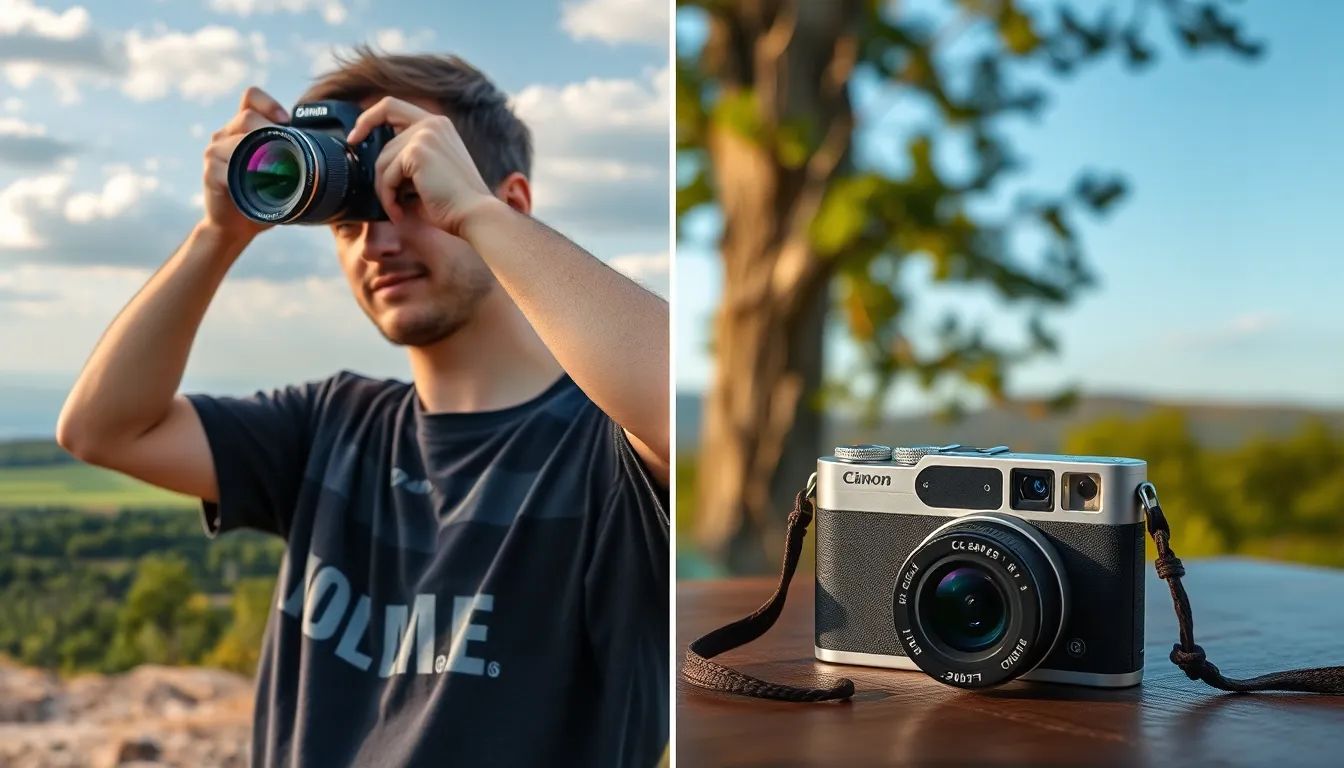In today’s fast-paced digital world, snapping the perfect photo has never been easier—or more complicated. With a plethora of digital photography tools at their fingertips, aspiring photographers find themselves in a whimsical playground of gadgets and software. From snazzy cameras that practically take selfies for you to editing apps that can turn a blurry mess into a masterpiece, the options are endless.
Table of Contents
ToggleOverview of Digital Photography Tools
Digital photography relies on various tools to enhance image quality and capture moments effectively. Cameras play a crucial role, with options ranging from DSLRs and mirrorless models to compact cameras and smartphones. Each type offers unique features, allowing photographers to choose based on their skill level and shooting style.
Lenses significantly impact the final image, offering different focal lengths and apertures for creative control. Photographers can select prime lenses for sharpness or zoom lenses for versatility. Using the right lens boosts the potential to achieve stunning compositions.
Editing software is another critical component in digital photography. Programs like Adobe Lightroom and Photoshop provide advanced tools for retouching, color correction, and enhancing details in photographs. Mobile applications like Snapseed and VSCO are also popular for quick edits on the go.
Tripods and stabilizers enhance stability during shooting, preventing blurriness in images. They help photographers achieve long exposure shots, making it easier to capture nighttime scenes or flowing water.
Lighting equipment, including external flashes and reflectors, improves photograph quality in low-light conditions. Mastering these tools helps photographers create more dynamic and professional-looking images.
Accessories such as filters add creativity through effects like polarizing and ND filters. Filters allow for more control over light entering the camera, enriching the overall visual experience.
With the abundance of digital photography tools available, photographers today can experiment and refine their skills, pushing their creative boundaries further. Choosing the right combination of tools can significantly impact the final photographic outcome.
Cameras

Cameras serve as the cornerstone of digital photography, offering various options for different skill levels and preferences.
DSLR vs. Mirrorless
DSLRs feature an optical viewfinder, providing a direct light path through the lens. Mirrorless cameras use electronic displays, allowing real-time previews of exposure and color. Both options excel in image quality, yet mirrorless systems tend to be lighter and more compact. DSLRs often excel in battery life, making them suitable for extended outdoor sessions. Choosing between these two types hinges on personal shooting preferences, with DSLRs appealing to traditionalists and mirrorless models attracting tech-savvy users.
Compact Cameras
Compact cameras, also known as point-and-shoot models, score high on convenience. These devices offer simplicity with automatic settings for quick snapshots. Many come equipped with built-in zoom lenses, making them flexible for various scenes. While compact cameras may not match the image quality of DSLRs or mirrorless options, they often feature high-resolution sensors suitable for everyday photography. Their lightweight design ensures easy portability, fitting comfortably in pockets or bags for on-the-go shooting. Photographers seeking hassle-free options find compact cameras an excellent choice for casual moments.
Lenses
Lenses play a crucial role in digital photography, significantly influencing image quality and composition. Understanding the types of lenses available enhances a photographer’s ability to capture various subjects effectively.
Prime Lenses
Prime lenses feature a fixed focal length, offering exceptional image quality and brightness. Photographers often appreciate their sharpness and low-light performance. A typical prime lens includes focal lengths such as 35mm, 50mm, and 85mm. They excel in portraiture, street photography, and scenarios requiring depth of field control. Prime lenses encourage creativity since they require photographers to move closer or farther from subjects, fostering a more intimate connection with the photograph.
Zoom Lenses
Zoom lenses provide versatility with adjustable focal lengths, making them suitable for various shooting situations. These lenses allow photographers to capture wide-angle landscapes or close-up portraits without changing lenses. Common zoom options range from 18-55mm for general use to 70-200mm for sports and wildlife photography. Flexibility stands out as a significant advantage, enabling photographers to adapt to changing environments quickly. Zoom lenses often serve as essential tools for travel and event photography, where changing lenses may be impractical.
Accessories
Accessories play a crucial role in enhancing digital photography experiences, providing additional support and functionality for capturing high-quality images.
Tripods
Tripods stabilize cameras during long exposure shots, reducing shake and resulting in sharper images. Various styles exist, including lightweight models for travel and heavy-duty options for professional use. Photographers often choose tripods with adjustable legs, allowing for flexibility on uneven ground. Some tripods feature ball heads, granting easy adjustments for angle changes. Compact tripods fit easily in bags, making them ideal for on-the-go photography.
Lighting Equipment
Lighting equipment significantly impacts image quality, especially in low-light settings. Softbox lights diffuse harsh shadows, creating a more flattering light for portraits. On-camera flashes provide additional illumination, ensuring subjects remain well-lit in various environments. Continuous LED lights offer consistent brightness, making them suitable for video and photography. Reflectors help bounce natural light, enhancing scenes captured outdoors. Various light modification tools enable photographers to manipulate and control their lighting effectively.
Software and Editing Tools
Digital photography relies heavily on effective software and editing tools to enhance images and manage projects efficiently.
Photo Editing Software
Adobe Lightroom stands out as a popular choice for photographers. This software offers powerful editing features, including color correction and noise reduction. Users appreciate its user-friendly interface for batch processing. Photoshop complements Lightroom with advanced capabilities. It provides tools for detailed retouching and image manipulation. Alternatives like Capture One and Affinity Photo present additional options, catering to various skill levels. Mobile editing apps such as Snapseed and VSCO allow quick adjustments on the go. Professionals utilize these tools to achieve polished results and cultivate their artistic vision.
Organizing and Cataloging Tools
Organization is crucial for managing a growing collection of digital images. Software like Adobe Bridge allows photographers to categorize and search images efficiently. This tool enables tagging with keywords and creating collections for easier access. Lightroom also includes cataloging features, making image management seamless. For those who prefer standalone solutions, DigiKam and Photo Mechanic provide robust options for organizing images by metadata and attributes. Cloud-based services like Google Photos and Adobe Creative Cloud offer additional capabilities, with easy sharing and backup features. These tools ensure photographers maintain control over their portfolios and streamline workflows.
The world of digital photography is brimming with opportunities for creativity and expression. With an array of cameras and editing tools at their fingertips, photographers can explore their unique styles and techniques. The right combination of equipment and software not only enhances the quality of images but also simplifies the editing process, allowing for greater artistic freedom.
As technology continues to evolve, photographers can expect even more innovative tools to emerge. Embracing these advancements will enable them to push their boundaries and capture stunning visuals that resonate with audiences. The journey of mastering digital photography is ongoing and filled with endless possibilities.



